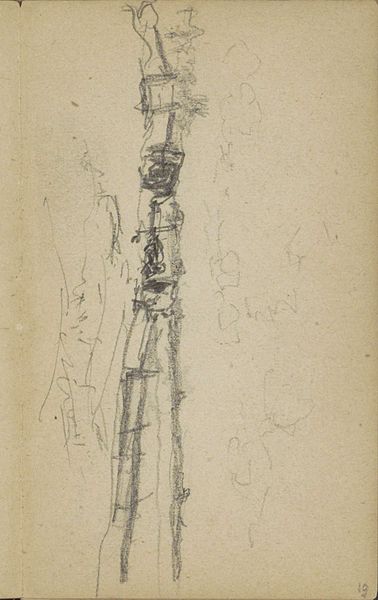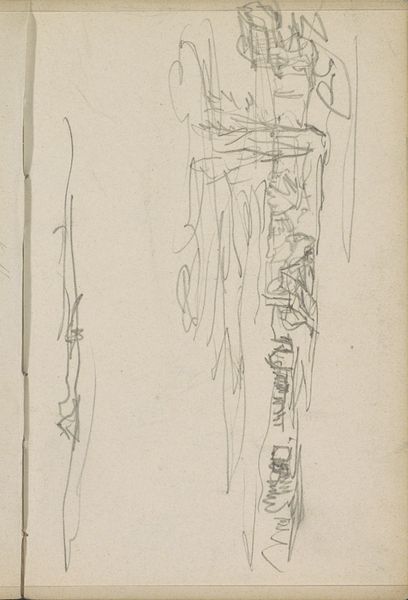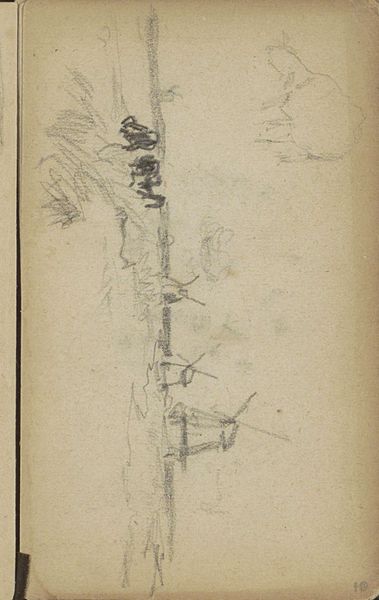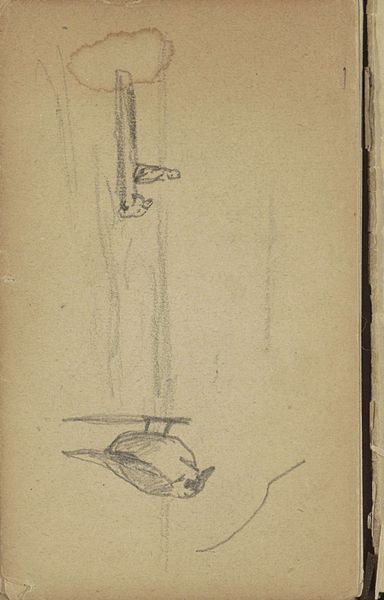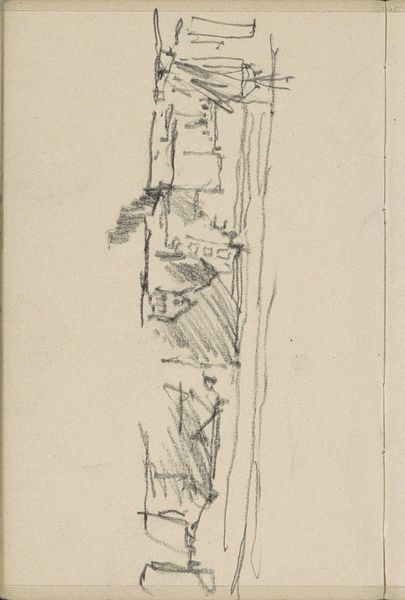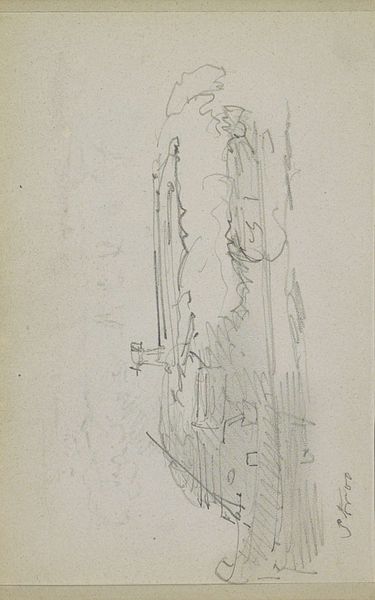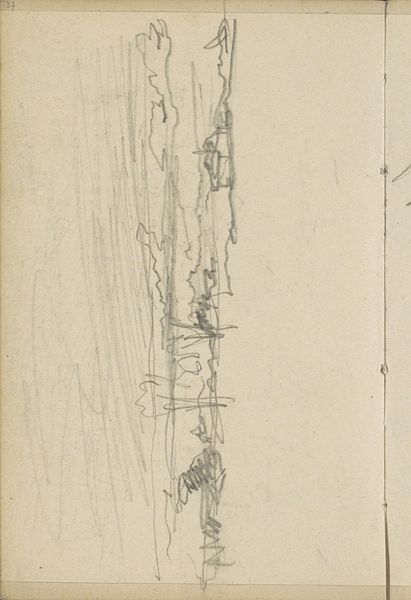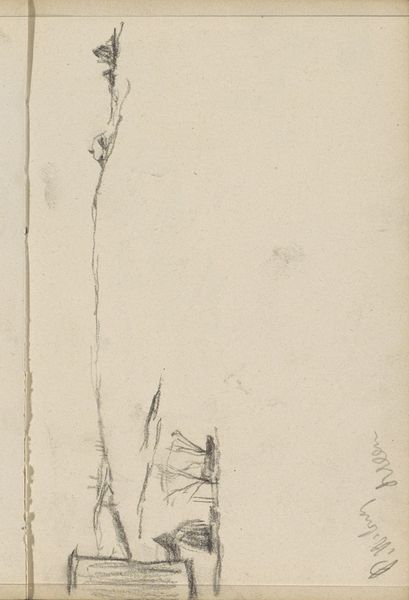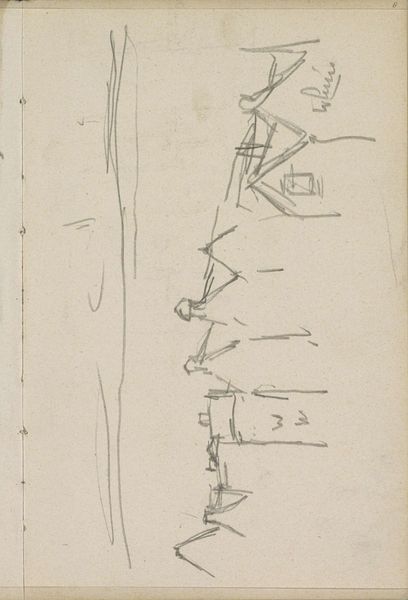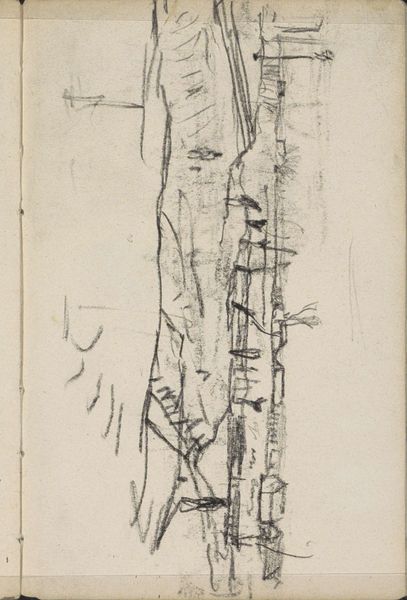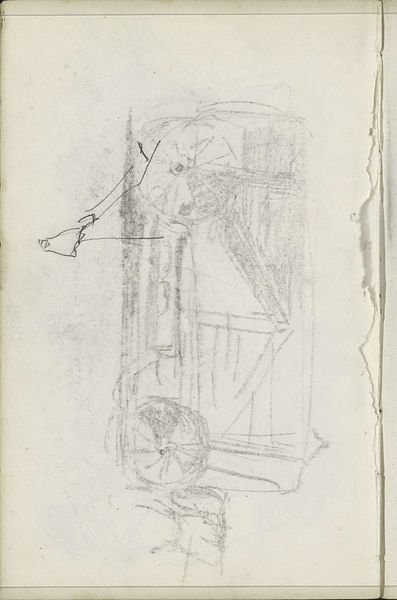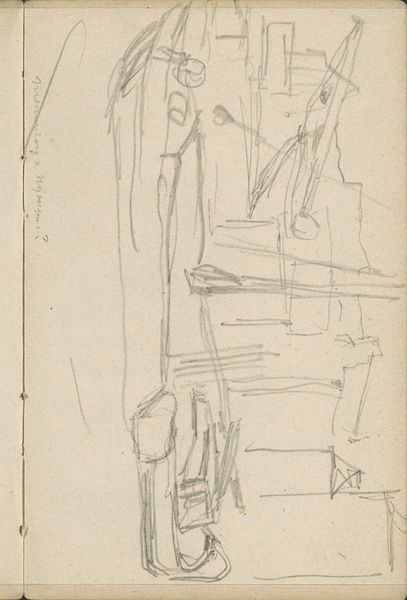
drawing, paper, pencil
#
drawing
#
light pencil work
#
quirky sketch
#
sketch book
#
landscape
#
figuration
#
paper
#
personal sketchbook
#
idea generation sketch
#
sketchwork
#
pen-ink sketch
#
pencil
#
line
#
sketchbook drawing
#
sketchbook art
#
realism
#
initial sketch
Copyright: Rijks Museum: Open Domain
Curator: What a delicate, almost ghostly image. Editor: Indeed. This sketch, "Figuur in een roeiboot" or "Figure in a Rowing Boat", is by Johan Hendrik Weissenbruch, who lived from 1834 to 1903. It's a pencil drawing on paper, here at the Rijksmuseum. What draws your attention first? Curator: The starkness. It's incredibly minimalist, isn't it? The lonely figure seems to represent a universal feeling of isolation that intersects across gender. The thinness of the lines lends it a certain fragility. Editor: Agreed, that fragility is potent. Considering Weissenbruch's era and his peers’ engagement with materiality, it suggests a specific relationship to available resources, doesn't it? The deliberate paring down may be born of economic considerations and materiality as much as an artistic choice to be 'minimalist'. Curator: That’s a sharp observation. And what about the rower's isolation within the broader context of Dutch society? Rowing, being both labour and leisure, invites a Marxist reading on the tension between social classes, between human capital and the forces acting on him. Editor: Right, rowing occupies an interesting liminal space between work and recreation and one would assume for Weissenbruch, living in a relatively privileged space, perhaps leisure rather than essential work to get somewhere. The choice of medium, humble pencil on paper, reinforces that almost disposable aspect—like a quickly jotted-down idea. Curator: I find it haunting how easily one can project various identities onto the figure, amplifying our capacity to empathize. But even the materials - the pencil and paper itself, are historically coded. Think about whose stories historically get written and documented and whose were neglected based on race and other intersectional divides. Editor: I see your point, the apparent ease hides a complex interplay of choice and constraint. The economic accessibility of pencil and paper compared to, say, oil paints on canvas is certainly something to consider. I am left wondering if the 'personal sketchbook' note suggests to the artist at the time it might never see light of day outside his personal sphere. Curator: It certainly gives one pause for thought. It invites a kind of reckoning with how we see our own history but with open, unresolvable contradictions. Editor: Precisely. We're reminded how seemingly simple images can unravel into complex tapestries of context and production.
Comments
No comments
Be the first to comment and join the conversation on the ultimate creative platform.
